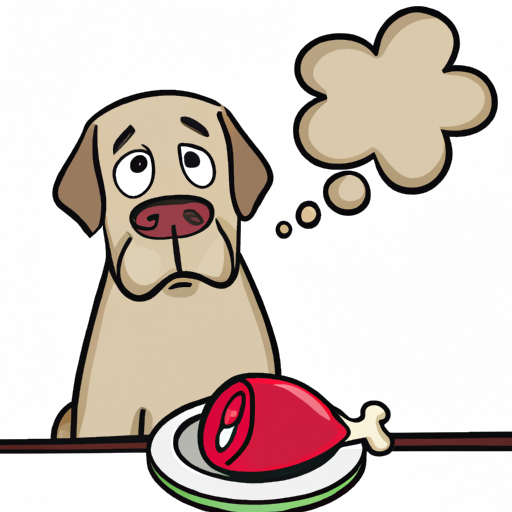1. The Risk of Pancreatitis
When it comes to dogs and their diets, it’s essential to remember you’re not just feeding a pet, but a member of your family. Just like you wouldn’t serve a toddler a super spicy dish, you shouldn’t serve your dog something that could potentially harm them. Pork, especially when it’s cooked or fatty, can cause pancreatitis in dogs. Pancreatitis, inflammation of the pancreas, can be a severe and life-threatening condition. It can lead to various complications, including dehydration, heart problems, and diabetes.
2. The Threat of Trichinosis
Let’s delve into the matter a little deeper. Pork can be a source of the parasite, Trichinella spiralis, which causes trichinosis. This disease can cause severe muscle pain, fever, and weakness in your beloved furry friend. Even though the chance of your dog contracting trichinosis from raw or undercooked pork is slim, it’s a risk not worth taking.
| Symptoms of Trichinosis |
|---|
| Fever |
| Muscle stiffness |
| Weakness |
| Swelling around eyes |
| Difficulty breathing |
3. Problems With Digestion
Now, imagine seeing your dog suffering from digestive issues. It’s not a pleasant sight, is it? Unfortunately, pork can be quite hard for dogs to digest. Because of its high fat content, it can lead to upset stomachs, diarrhea, and vomiting. This is especially true if your dog is not used to eating pork or if they consume a large amount at once.
4. Potential Choking Hazards
Still wondering why pork isn’t the best choice for your canine companion? Consider this: pork bones can be a serious choking hazard. Unlike some other types of bones, pork bones can splinter and cause blockages in the throat or intestines. This can lead to serious health problems and may even require surgery.
5. Alternative Protein Sources
Now that you’re aware of the dangers of feeding pork to dogs, you’re probably wondering about alternatives. Thankfully, there are many other protein sources that are safe and healthy for dogs. These include chicken, turkey, beef, and fish.
- Chicken is low in fat and high in protein.
- Turkey is a good source of nutrients like zinc and vitamin B6.
- Beef is packed with essential amino acids and minerals.
- Fish like salmon are rich in omega-3 fatty acids, which can help improve your dog’s skin and coat.
Frequently Asked Questions (FAQ)
Q: Can dogs eat cooked pork?
A: While cooked pork is less likely to contain parasites than raw pork, it can still pose risks such as pancreatitis due to its high-fat content.
Q: What about pork bones? Are they safe?
A: No, pork bones can splinter and cause blockages in the throat or intestines, posing a serious choking hazard.
Q: Can my dog eat pork if it’s part of their dog food?
A: Yes, if pork is an ingredient in a commercial dog food, it has been processed in a way that is safe for dogs to consume.
Q: What should I do if my dog accidentally eats pork?
A: If it’s a small amount, monitor your dog closely for any signs of distress. If your dog eats a large amount or appears sick, contact your vet immediately.



